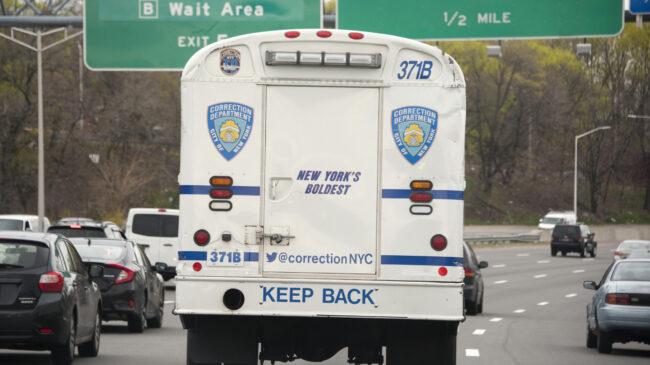A recent report analyzing four deaths on Rikers Island in the second half of 2023 (out of nine total for the year) reached disappointing—but unfortunately not surprising—conclusions. The report, issued by the New York City Board of Correction, reflects a pervasive and persistent pattern of what appears to be, at best, casual violations of Eighth Amendment prohibitions on cruel and unusual punishment, and, at worst, deliberate indifference to the health conditions of incarcerated people.
All four men entered Rikers jails as pretrial detainees (three could not pay the assessed bail, and one was remanded to custody) with serious mental health diagnoses and histories. Nevertheless, the report recounts many instances in which guards contributed to these deaths by failing to properly check on the men, being absent from their posts, allowing windows to be covered, and not following procedures.
The deaths recounted in this report are far too familiar. Given the overall condition of jails and prisons across the country, it is hard to fathom how agencies continue to get away with operating them—especially ones plagued with as much violence and bleak and intolerable conditions as Rikers Island—in the face of obvious failures to provide adequate care.
For context, the Board of Correction report acknowledged that The New York Times has described Rikers Island as New York’s largest mental institution and reported that “half the people in City custody have been diagnosed with a mental illness.” The report also noted that “All of the individuals whose deaths are covered in this report had self-reported mental health histories prior to incarceration, and some described drug use and treatment in the community.”
Incarcerated people are entitled to adequate medical and mental health care treatment. Unfortunately, as the populations in prisons and jails have exploded over decades, care and individualized attention have suffered. Even when doctors are available, missed appointments and delayed care are endemic to prison settings. In one case in this report, an EKG was rescheduled 50 times.
The report explained:
“Another concern highlighted throughout this report is the number of medical visits individuals missed while they were in DOC [Department of Corrections] custody. People often come into custody suffering from chronic diseases, mental health issues, addiction problems, or lack of access to quality care outside of confinement. This makes access to healthcare while incarcerated all the more important… In two of the cases covered in this report, a patient missed more than one medical appointment in the month prior to their deaths.”
Intolerable results of overcrowding and poor medical care are nothing new in U.S. prisons. In the Brown v. Plata decision in 2011, the U.S. Supreme Court affirmed an order requiring California to reduce the population of its prisons by up to 46,000 because overcrowding was leading to so many deaths. The opinion noted “needless suffering and death have been the well-documented result” of overcrowding. Testimony heard by the lower court also highlighted major issues in California’s prison system.
In upholding the order to reduce the population of California prisons, the Supreme Court confirmed that the Constitution cannot allow overcrowding when the results are death, infection, and inhumane conditions.
The beginning of the COVID-19 pandemic nearly a decade after the Brown v. Plata decision offered a unique opportunity to address overcrowding in prisons. Many jurisdictions reduced the number of people sent to incarceration or released people. At the federal level, a natural experiment took place in the form of the release of 13,204 individuals to home confinement under the CARES Act because they were low-risk individuals especially vulnerable to COVID-19. Three years later, only 22 of those released (less than 1% of the total number of released prisoners) had been arrested on new charges, the vast majority of which were nonviolent offenses. This proves that many individuals who are in prison could be safely released into the community and that prison space, personnel, and programming would be better devoted to those whose incarceration fulfills the purposes of sentencing.
Harms from incarceration are well-documented, and it has now been established by a comprehensive meta-analysis that, concerning reducing recidivism, there is a “null effect of custodial compared with noncustodial sanctions.” Given that incarceration does not reduce future crime, and in light of the clear dangers inherent to custodial settings, various policies should be explored to improve the system.
Divert people from confinement
People who present with mental health or substance use disorders should be diverted away from carceral settings, precisely to avoid the kinds of preventable deaths that are outlined in the New York City Board of Correction report. On top of the fact that appropriate and timely medical care is routinely lacking in American jails and prisons, it is impracticable—and improper—to put people with medical needs in non-therapeutic environments and fail to deliver standard-of-care treatment.
Hope for the federal system has emerged through President Joe Biden’s Executive Order 14074 on Advancing Effective, Accountable Policing and Criminal Justice Practices to Enhance Public Trust and Public Safety and the actions of the U.S. Sentencing Commission. The executive order included strong support for alternatives to incarceration, and the attorney general and Sentencing Commission have both taken actions to underscore the need to expand non-carceral sanctions and avoid unnecessary incarceration.
Boost judicial and public awareness of conditions
Out of sight is out of mind. Most people, even judges and prosecutors, haven’t experienced incarceration themselves. Visiting prisons and jails is one way for judges to become more attuned to the conditions to which they are sending people when sentencing them to incarceration. Former federal district court judge Mark Bennett, now a professor, personally visited more than 400 individuals he had sentenced to incarceration while he sat on the bench. Bennett reflected at a George Washington University Law School summit in October 2023 that visiting inmates taught him “something I knew intuitively, but didn’t understand at an emotional level, and that was that these … sentences that the guidelines and the mandatory … minimums required were draconianly harsh.”
Improve conditions and wellness for incarcerated individuals and correctional staff
The conditions in America’s prisons and jails have long been notorious, and today they are marked by unprecedented staffing shortages, overcrowding, antiquated facilities, violence, and other challenges. As COVID-19 taught us, carceral facilities are porous, not closed, and are hotbeds for disease spread, including among staff who go regularly into the community.
In February, the United States Department of Justice (DOJ) Office of the Inspector General issued a report reviewing 344 inmate deaths at Federal Bureau of Prisons (BOP) institutions from 2014 through 2021. According to The New York Times, the report demonstrates that the BOP “routinely subjects prisoners to conditions that put them at heightened risk of self-harm, drug overdoses, accidents and violence.”
There is no question that poor conditions and treatment, while prevalent today, are unacceptable for not only the incarcerated individuals but also for correctional staff, whose life expectancy was found in a study to be an eye-poppingly-low 59 years. Indeed, there is a growing recognition that improving wellness for correctional staff must be an integral part of efforts to improve conditions for incarcerated people.
Conclusion
Deaths in any large system are expected, but it is unacceptable when they routinely result from neglect or worse. If a hospital had this many preventable deaths, it would not be allowed to continue to operate. It is important to ensure that we don’t permit our prisons and jails to deliver torture and undue danger of death. That is the mandate of the prohibition on cruel and unusual punishment in the U.S. Constitution, and the mark of moral governance.

